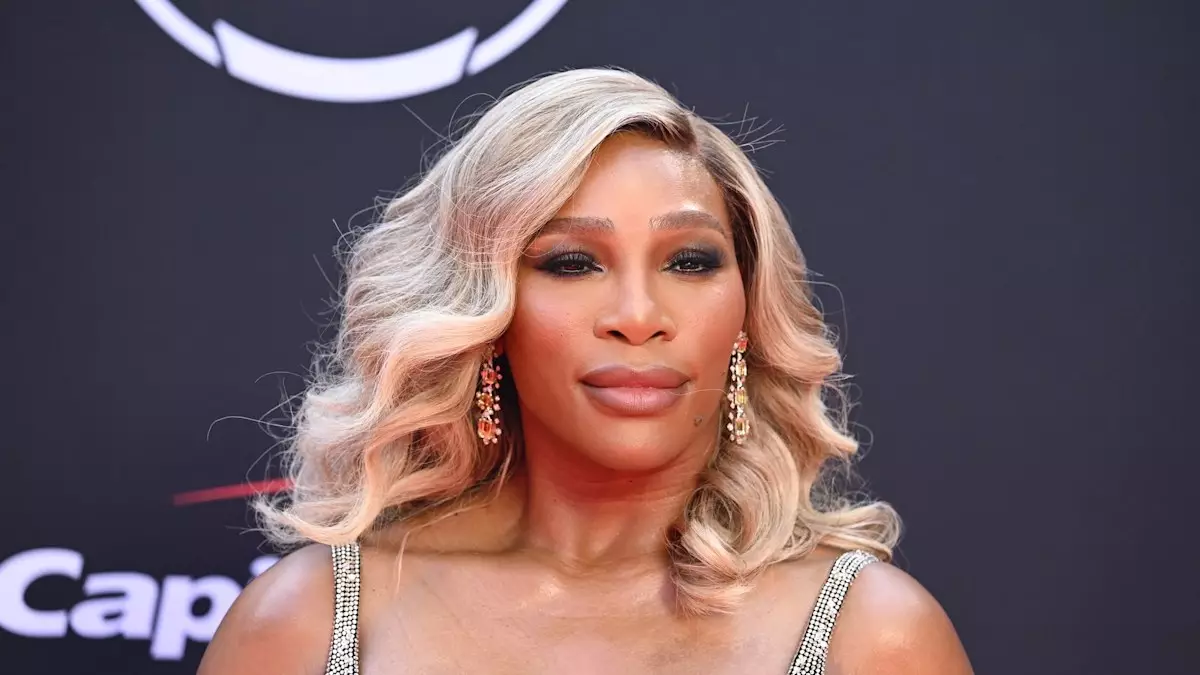Serena Williams, one of the most prominent figures in sports history, has made splashes both on and off the tennis court. While known for her powerful serves and unyielding determination, she recently ventured into unexpected territory: the Super Bowl Halftime Show. This performance, a collaboration with renowned rapper Kendrick Lamar, showcased her unique blend of athleticism and cultural flair, an intersection of pride and personal history that captivated audiences.
When Kendrick Lamar’s team reached out to Serena, the idea initially took her by surprise. “Super Bowl? Are you serious?” she reflected in a candid moment shared on social media. This wasn’t just any performance; it was the Super Bowl, an event that draws millions of viewers worldwide. Williams, struck by the significance of the occasion and the nostalgia tied to her previous dance move, the crip walk, saw a golden opportunity. The crip walk, made famous in her Olympic victory against Maria Sharapova, was not only a celebration of achievement but also a representation of her roots in Compton, California.
Williams immediately connected her past with the present, understanding how this moment could encapsulate the essence of both her sporting persona and cultural identity. She embraced the chance to merge these worlds, bringing together her passion for athletics and her love for hip-hop culture.
Serena’s appearance wasn’t just significant for her career; it symbolized greater cultural representation in mainstream events. By showcasing a dance deeply rooted in her community during the Super Bowl, Williams brought to the forefront the importance of acknowledging and celebrating cultural heritage. The crip walk is not just a dance; it tells a story of resilience from her hometown, a narrative that Kendrick Lamar channels in his music as well.
Despite the backlash she faced back in 2012 for this cultural expression, Williams’ decision to perform the crip walk again represents personal growth and defiance against negativity. Her ability to transform past controversies into a moment of joy and pride reflects a powerful message for her fans and supporters—it’s about owning one’s identity, regardless of the public perception.
The buildup to the Halftime Show was as exhilarating as the performance itself. Serena shared glimpses of her journey on Instagram, creating a relatable experience for fans. Transformation takes time and effort; a behind-the-scenes glimpse of her getting ready highlighted the dedication required not just in sports but in any creative endeavor. Every performance is multi-dimensional, encompassing preparation, emotion, and the thrill of execution in front of a live audience.
Her elation backstage after the performance—proclaiming it the best ten seconds of her life—was a reminder that success is often tied to moments of pure, unfiltered happiness. This reaction underscored the joy of performance and the impact of connection with an audience, whether through sport or art.
The performative collaboration between Serena Williams and Kendrick Lamar surprisingly stirred the waters of celebrity relationships as well. Williams has had a complicated past with rapper Drake, making her current involvement with Kendrick even more intriguing. Their histories intertwine, creating a cultural mosaic where past relationships color the present narrative. With the backdrop of Kendrick’s ongoing lyrical rivalry with Drake, Williams unearths layers of excitement and tension in her Super Bowl moment.
While she never officially acknowledged a romantic involvement with Drake, her longstanding connection resonated with fans, who poured over lyrics and references in Drake’s music. Williams cleverly commented on the rivalry between Drake and Kendrick, emphasizing the importance of choosing battles wisely, especially in the world of talent and creativity.
Serena Williams continues to redefine what it means to be a multifaceted public figure. By bridging her athletic triumphs with cultural influences in unexpected venues like the Super Bowl, she enhances her legacy beyond sports. Williams embodies the idea that success is not merely defined by trophies and medals but by the impact one leaves on culture and society. As she continues to forge new paths, her Super Bowl Halftime Show appearance stands out as a testament to her indelible spirit, cultural pride, and the power of representation in the spotlight.
